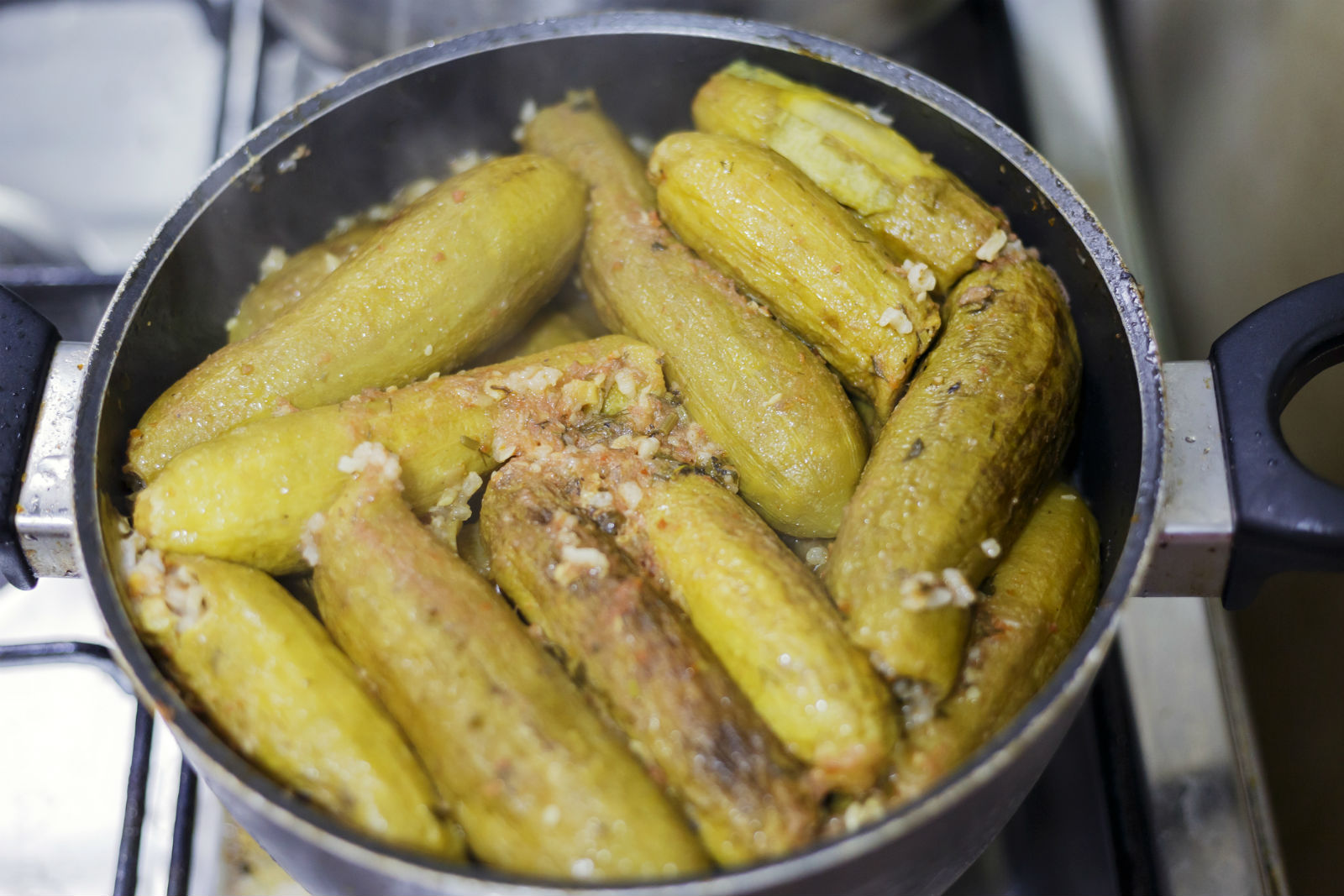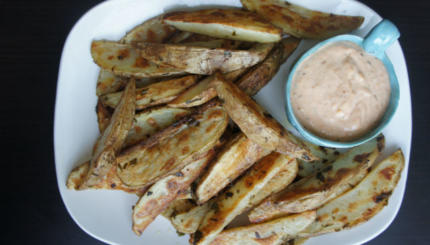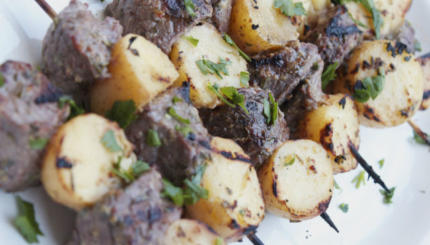When celebrating the New Year, Middle Eastern Jews have more than a meal: They have a seder. As with the Passover meal, the Rosh Hashanah seder features symbolic foods before the festive meal, a custom that goes back about 1,800 years to when the Jewish sages of Babylon, present day Iraq, were writing the Talmud.
Alicia Assa, the author of the cookbook “Sabores de Mexico”, comes from a Syrian Jewish family that made its way to Mexico at the start of the 20th century. Her family had been in Syria since their expulsion from Spain in 1492, and they brought their customs and foods with them. Still today, Alicia’s family makes a Rosh Hashanah seder of carefully cooked symbolic foods, just as her grandparents and their grandparents made theirs.
At Alicia’s Rosh Hashanah table, you will find stuffed vegetables like cabbage, zucchini, or grape leaves known as “menchshe.” The sauce is sweetened with apricots, prunes and tamarind. And for the rest of the meal, the symbolic foods are incorporated in the dishes. Iranian rice is mixed with orange peel and pomegranate. String beans with tomato sauce and garlic are served at the start of the meal and in the meal itself. Swiss chard, beets, dates — symbolic foods all — are served in a variety of ways.
But be warned. Before you get to the sweet stuffed vegetables, expect to see a fish head. And to bless it.
The Nosher celebrates the traditions and recipes that have brought Jews together for centuries. Donate today to keep The Nosher's stories and recipes accessible to all.
You can read more about the diverse, symbolic and delicious Syrian Rosh Hashanah traditions here.
Notes:
- You can keep the raw, stuffed zucchini in the freezer until you are ready to cook them (see Step Two).
- Tamarind sauce is available in speciality stores.
Syrian Stuffed Zucchini with Dried Fruit
A symbolic dish to begin the new year.
- Total Time: 3 hours
- Yield: Serves 4-6
Ingredients
For the zucchini:
- 8 medium zucchini, lightly peeled so that the zucchini looks striped, and cored. Leave ¼-inch-thick shell all around the cored center of the zucchini
- ½ lb ground beef
- 1 cup rice (not precooked), soaked in hot water for 1 hour, and then drained
- 1 tsp Arabic allspice (available in specialty or spice stores)
- pinch kosher salt
- 2 Tbsp vegetable oil
For the sauce:
- 1 ½ cups of water
- 4 Tbsp tamarind sauce
- 1 Tbsp lemon juice
- 1 Tbsp sugar
- pinch of salt
- 8 dried Turkish apricots
- 8 dried pitted prunes
Instructions
- Preheat the oven to 350°F.
- Mix the ground beef, rice, allspice and salt with your hands and stuff the mixture into the center of the zucchini so that it is 3/4 full. (You can keep the raw, stuffed zucchini in the freezer until you are ready to cook them.)
- Heat the vegetable oil in a frying pan. Sear the stuffed zucchini over medium heat until they brown a bit. Place the browned, stuffed zucchini in a baking dish.
- Mix all sauce ingredients in a bowl. Pour over the zucchini and bake, covered, until juices have cooked down and meat is tender, about 2 hours.
Notes
- You can keep the raw, stuffed zucchini in the freezer until you are ready to cook them (see Step Two).
- Tamarind sauce is available in speciality stores.
- Prep Time: 1 hour
- Cook Time: 2 hours
- Category: Main
- Method: Stovetop
- Cuisine: Sephardi




Leave a Comment